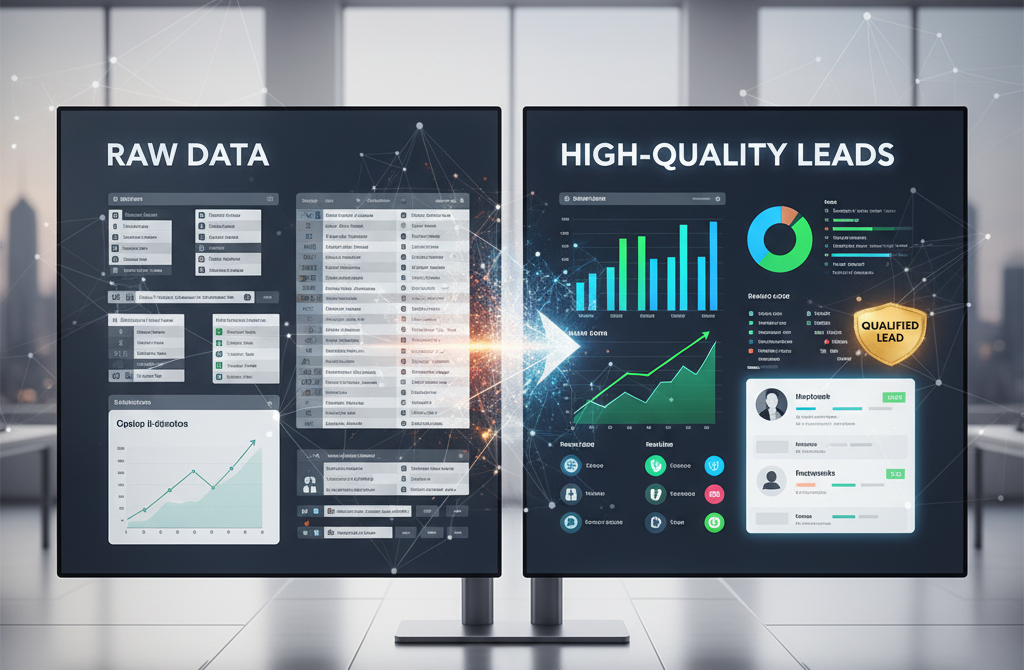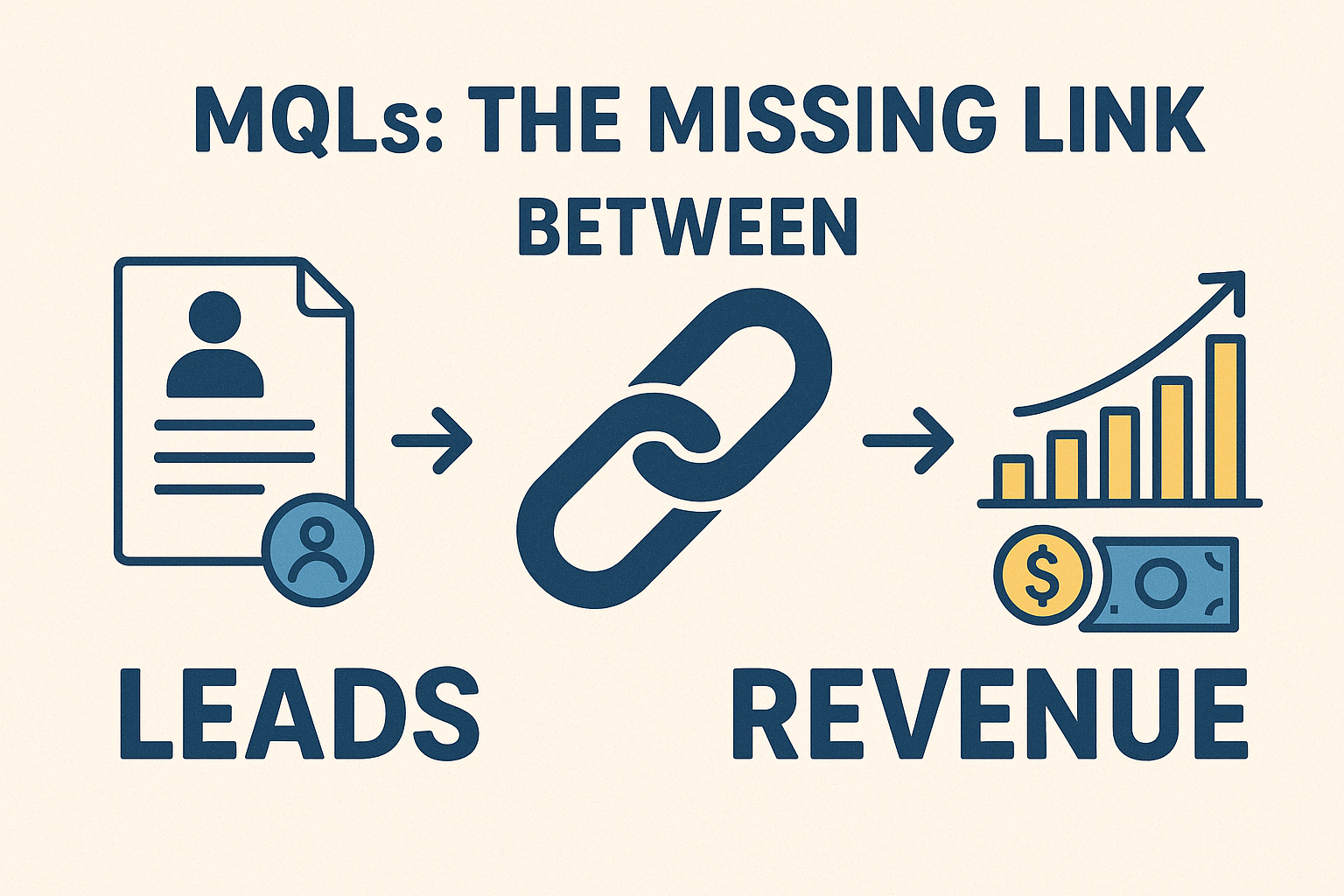The B2B world is consistently changing, therefore, businesses constantly seek innovative ways to attract and engage potential clients. One vital strategy that has emerged as a game-changer is demand generation.
This comprehensive approach focuses on creating awareness and interest in your products or services, paving the way for sustainable growth and long-term success.
“You are out of business if you don’t have a prospect.”
– Zig Zigler
Unlike traditional marketing that aims for immediate sales, demand generation nurtures prospects through their buying journey, from awareness to decision-making.
This involves various tactics like content marketing, social media engagement, and webinars, all designed to educate and engage potential customers.
Implementing a robust demand generation strategy enables B2B companies to build brand awareness, cultivate relationships with prospects, and ensure a steady influx of high-quality leads.
“Make a customer, not a sale.”
– Katherine Barchetti
This approach integrates marketing and sales operations, resulting in coherent corporate growth. In this blog, we’ll look at the complexities of demand generation, differentiate it from lead generation, and present a step-by-step plan to help you create a successful demand generation strategy for your B2B business.

Demand Generation 1
Table of Contents
ToggleUnderstanding Demand Generation: Definition and Explanation
Demand generation is a multifaceted marketing approach designed to create awareness and stimulate demand for your product or service. It goes beyond traditional marketing by focusing on a holistic strategy that nurtures prospects through every stage of their buying journey.
This journey includes awareness, consideration, and decision-making stages, ensuring that potential customers are well-informed and engaged before making a purchase. To achieve this, demand generation employs a variety of marketing tactics.
These can include content marketing, where valuable and relevant content is produced to attract and educate prospects; social media marketing, which leverages platforms like LinkedIn and Twitter to engage with your audience; and email marketing, which helps nurture leads through personalized communication.
Webinars, industry events, and pay-per-click (PPC) advertising are crucial in reaching and engaging potential customers.
Unlike traditional marketing, which often prioritizes immediate sales, demand generation focuses on building long-term relationships. It aims to position your brand as a trusted authority and resource in your industry.
Demand generation helps potential customers understand the value of your offerings by providing educational and informative content, addressing their pain points and needs over time.
This approach increases brand awareness and enhances the likelihood of conversion by ensuring prospects are highly engaged and informed throughout their journey.
Difference between demand generation and lead generation
Demand Generation:
- A comprehensive approach to create broad awareness and interest in products/services.
- Includes content marketing, social media engagement, webinars, etc.
- Goal: Foster long-term brand awareness and demand, and nurture prospects over time.
Lead Generation:
- A subset of demand generation focused on capturing prospect contact information.
- Tactics: Gated content (eBooks, whitepapers), forms, direct outreach, targeted ads.
- Objective: Convert broad interest into actionable leads for further nurturing and conversion.
Summary:
- Demand generation builds broad awareness and interest through various marketing activities.
- Lead generation focuses on converting interested prospects into actionable leads.
- Both are essential for guiding prospects from awareness to conversion in marketing strategies.
Importance of Integrating a Demand Generation Strategy for Your B2B Company
Integrating a robust demand generation strategy is crucial for B2B companies due to its multifaceted benefits that drive both immediate and long-term success. Here’s why an effective demand-generating plan is essential:
1# Brand Awareness
Consistently delivering valuable content and engaging with your target audience establishes your brand as a thought leader in your industry. High-quality content such as blog posts, whitepapers, and webinars not only educate your audience but also build trust and credibility.
As your brand becomes synonymous with valuable insights and reliable information, it naturally attracts more attention and interest, laying a solid foundation for sustained demand.
2# Nurturing Prospects
Demand generation is integral to nurturing prospects throughout their buying journey. Unlike traditional marketing, which often aims for quick conversions, demand generation focuses on building relationships over time.
Continuous, relevant content and personalized interactions guide potential customers from the initial awareness stage through consideration to the decision-making phase. This nurturing process helps in developing a deeper connection with prospects, increasing the likelihood of conversion.
3# Quality Leads
A well-executed demand generation strategy attracts high-quality leads that are more likely to convert into paying customers.
Targeting the right audience with the right content ensures that leads entering your sales funnel are genuinely interested in your offerings. These quality leads are not just looking for information but are also more inclined towards making a purchase, thus enhancing the efficiency and effectiveness of your sales efforts.
4# Sales Alignment
One of the significant advantages of demand generation is its ability to align marketing and sales efforts. By ensuring that both teams work towards common goals, you create a more cohesive and collaborative environment.
Marketing efforts generate awareness and interest, while sales teams convert that interest into actual sales. This alignment leads to a seamless transition from marketing to sales, improving overall performance and results.
5# Long-term Growth
Sustained demand generation efforts contribute to long-term business growth by continuously filling the sales pipeline with qualified prospects. This ongoing influx of potential customers ensures that your business remains resilient and capable of weathering market fluctuations.
Maintaining a steady stream of high-quality leads secures a robust foundation for future growth and scalability.
Integrating a demand generation strategy into your B2B marketing efforts is essential for building brand awareness, nurturing prospects, attracting quality leads, aligning sales and marketing, and ensuring long-term growth.
Focusing on these key areas, demand generation creates a sustainable and effective pathway to business success.

Demand Generation 2
Step-by-step Guide to Creating a B2B Demand Generation Strategy
1# Define Your Goals and Objectives
Start by identifying clear, measurable goals for your demand generation efforts. These could include increasing website traffic, boosting social media engagement, generating qualified leads, or enhancing brand awareness. Ensure your objectives align with your overall business goals.
For instance, if your business goal is to expand into a new market, your demand generation goal might focus on increasing brand visibility within that specific sector. Establish specific, measurable, attainable, relevant, and time-bound (SMART) objectives to guide your efforts.
For example, you might aim to increase website traffic by 30% in the next six months or generate 200 qualified leads per quarter. Clear goals help in creating a focused strategy and allow for better allocation of resources.
Regularly review and adjust your goals based on performance data and evolving business priorities to ensure continued alignment and effectiveness.
2# Understand Your Target Audience
Conduct thorough market research to understand your target audience’s needs, pain points, and preferences. Create detailed buyer personas that capture demographic and psychographic information, helping you tailor your marketing efforts to resonate with your ideal customers.
Start by gathering data from various sources, such as customer surveys, interviews, social media insights, and website analytics. Identify key characteristics such as industry, job role, company size, and buying behavior.
Understand their challenges, goals, and the type of content they consume. Use this information to create comprehensive buyer personas that represent different segments of your target market.
These personas guide your content creation, messaging, and channel selection, ensuring your marketing efforts are relevant and compelling. Continuously update your personas as you gather more data and as market conditions evolve.
3# Develop a Content Strategy
Content is the backbone of demand generation. Create a diverse content plan that includes blog posts, whitepapers, case studies, infographics, videos, and more. Ensure your content addresses your audience’s challenges and provides valuable insights.
Start by mapping out the buyer’s journey and identifying content needs at each stage – awareness, consideration, and decision. Develop topics that educate, inform, and solve problems for your audience.
Use different formats to cater to varying preferences and learning styles. For example, use blog posts for thought leadership, whitepapers for in-depth research, and videos for engaging storytelling.
Regularly update your content to keep it relevant and engaging. Incorporate a mix of evergreen and timely content to maintain a steady flow of traffic and engagement. Promote your content through various channels to maximize reach and impact.
4# Leverage Multi-Channel Marketing
Utilize a mix of marketing channels to reach your audience where they are. This can include email marketing, social media, SEO, PPC advertising, webinars, and industry events. A multi-channel approach ensures broader reach and engagement.
Start by identifying the channels that your target audience frequents and tailor your message accordingly. For email marketing, create personalized and segmented campaigns to nurture leads. On social media, engage with your audience through regular posts, ads, and interactive content.
Use SEO to improve organic search visibility and attract inbound traffic. PPC advertising can drive targeted traffic quickly, while webinars and industry events offer opportunities for direct interaction and relationship building.
Integrate your efforts across channels to provide a seamless experience and reinforce your message. Track the performance of each channel to optimize your strategy and allocate resources effectively.
5# Implement Marketing Automation
Marketing automation tools can streamline your demand generation efforts by automating repetitive tasks, such as email campaigns, social media posting, and lead nurturing. This allows your team to focus on more strategic activities.
Choose a marketing automation platform that fits your needs and integrates with your existing systems. Use automation to segment your audience based on behavior, demographics, and engagement levels. Create automated workflows to send personalized emails, follow up with leads, and nurture prospects through the sales funnel. Use social media scheduling tools to maintain a consistent presence across platforms.
Automation can also help with lead scoring, enabling you to prioritize high-quality leads for your sales team. Regularly review and optimize your automation workflows to ensure they remain effective and aligned with your goals.
6# Optimize for SEO
Optimize your content for search engines to increase visibility and attract organic traffic. Conduct keyword research to identify relevant secondary keywords and incorporate them naturally into your content. This improves your chances of ranking higher in search engine results pages (SERPs).
Start by using tools like Google Keyword Planner, Ahrefs, or SEMrush to find keywords related to your industry and audience. Focus on long-tail keywords that have lower competition but high relevance. Incorporate these keywords into your titles, headings, meta descriptions, and throughout your content.
Ensure your website is technically sound with fast loading times, mobile responsiveness, and secure connections (HTTPS). Build quality backlinks from reputable sites to boost your domain authority.
Regularly update your content to keep it fresh and relevant. Monitor your SEO performance using tools like Google Analytics and Search Console, and adjust your strategy as needed.
7# Measure and Analyze Performance
Track the performance of your demand generation campaigns using key metrics such as website traffic, conversion rates, lead quality, and engagement levels. Use analytics tools to gain insights and make data-driven decisions to refine your strategy.
Start by setting up tracking systems like Google Analytics, CRM software, and marketing automation platforms. Define key performance indicators (KPIs) for each stage of your demand generation process. Monitor website metrics such as page views, bounce rate, and average session duration.
Track lead metrics like form submissions, lead quality scores, and conversion rates. Analyze engagement metrics across your marketing channels, including email open rates, click-through rates, and social media interactions. Use this data to identify trends, strengths, and areas for improvement.
Regularly review your performance against your goals and adjust your strategy to optimize results. Conduct A/B testing to determine the most effective tactics and continuously refine your approach based on data-driven insights.

Demand Generation 3
Key points of an effective demand generation strategy
1# Customer-Centric Approach
- Focus on delivering value by addressing audience needs and pain points.
- Create tailored solutions to foster stronger connections and increase conversion likelihood.
2# Consistent Messaging
- Ensure uniform brand voice across all channels.
- Reinforce brand identity and resonate with your audience to build trust and recognition.
3# High-Quality Content
- Invest in creating informative, engaging, and authoritative content.
- Establish your brand as a thought leader and a valuable resource.
4# Integrated Campaigns
- Coordinate efforts across various marketing channels.
- Create a seamless and cohesive experience to amplify messaging and increase effectiveness.
5# Continuous Improvement
- Regularly review and optimize strategy based on performance data and market trends.
- Adapt and refine an approach to maintain relevance and competitive edge.
- Meet the evolving needs of your audience for sustained success.
How to get success in Demand Generation Campaigns?
To achieve success in demand generation campaigns, it’s essential to combine strategic planning, diligent execution, and continuous optimization. Here are key tips elaborated to guide your efforts:
1# Align Marketing and Sales:
- Collaborate on Goals: Ensure marketing and sales teams work together to define common objectives. This alignment helps in creating a unified strategy that targets the right audience with cohesive messaging.
- Share Insights: Regularly exchange data and insights between teams. Sales can provide feedback on lead quality, while marketing can share data on campaign performance, helping refine the approach continually.
2# Personalize Your Approach:
- Segment Your Audience: Divide your audience into segments based on demographics, behavior, and preferences. This enables more targeted and relevant communication.
- Tailored Messaging: Develop customized messages that address the specific needs, pain points, and interests of each segment. Personalization increases engagement and conversion rates.
3# Leverage Technology:
- Advanced Marketing Tools: Utilize CRM systems, marketing automation platforms, and data analytics tools to streamline and enhance your demand generation efforts.
- Gain Insights: Use these tools to gather valuable data on customer behavior, campaign performance, and market trends, which can inform strategic decisions.
4# Test and Iterate:
- A/B Testing: Regularly test different versions of your content, landing pages, and email campaigns to determine what resonates best with your audience.
- Optimize Continuously: Use the insights gained from testing to refine your strategies. Iterative improvements can lead to significant gains in effectiveness over time.
5# Engage with Your Audience:
- Interactive Content: Incorporate interactive elements such as quizzes, polls, and calculators into your content to engage users actively.
- Social Media Interactions: Leverage social media platforms to engage with your audience, respond to their queries, and build a community around your brand.
- Personalized Communication: Use personalized emails and messages to nurture leads, making them feel valued and understood, which can significantly improve conversion rates.
Focusing on these key areas enables you to create more effective demand generation campaigns that not only attract potential customers but also nurture them into loyal clients.
The continuous cycle of testing, learning, and optimization ensures that your strategies remain relevant and effective in an ever-changing market landscape.
Conclusion
Demand generation is a vital strategy for B2B companies looking to drive sustainable growth and establish a strong market presence.
Understanding the nuances of demand generation, differentiating it from lead generation, and following a structured approach allows you to create a powerful demand generation strategy that attracts, nurtures, and converts high-quality leads.
Remember, the key to success lies in delivering value, maintaining consistency, and continuously optimizing your efforts based on data and feedback. Embrace demand generation as a long-term investment in your business’s future, and you’ll be well on your way to achieving lasting success.
I hope you find the above content helpful. For more such informative content please visit PangeaGlobalServices.






